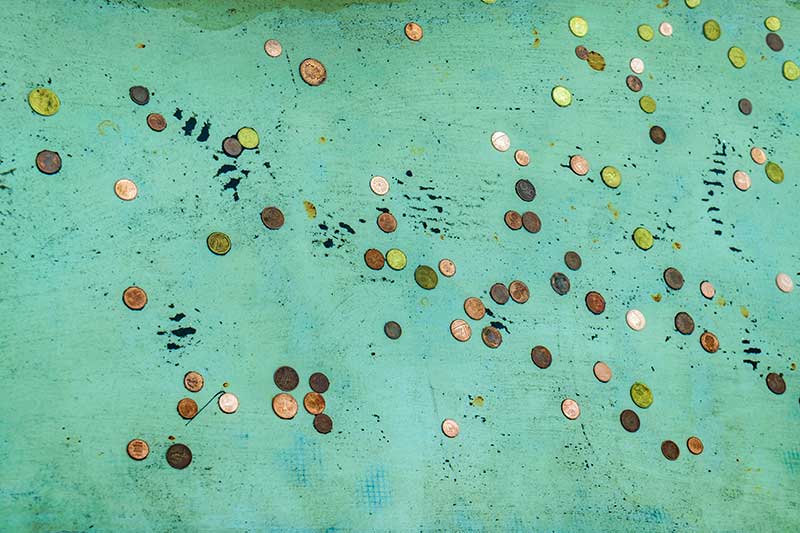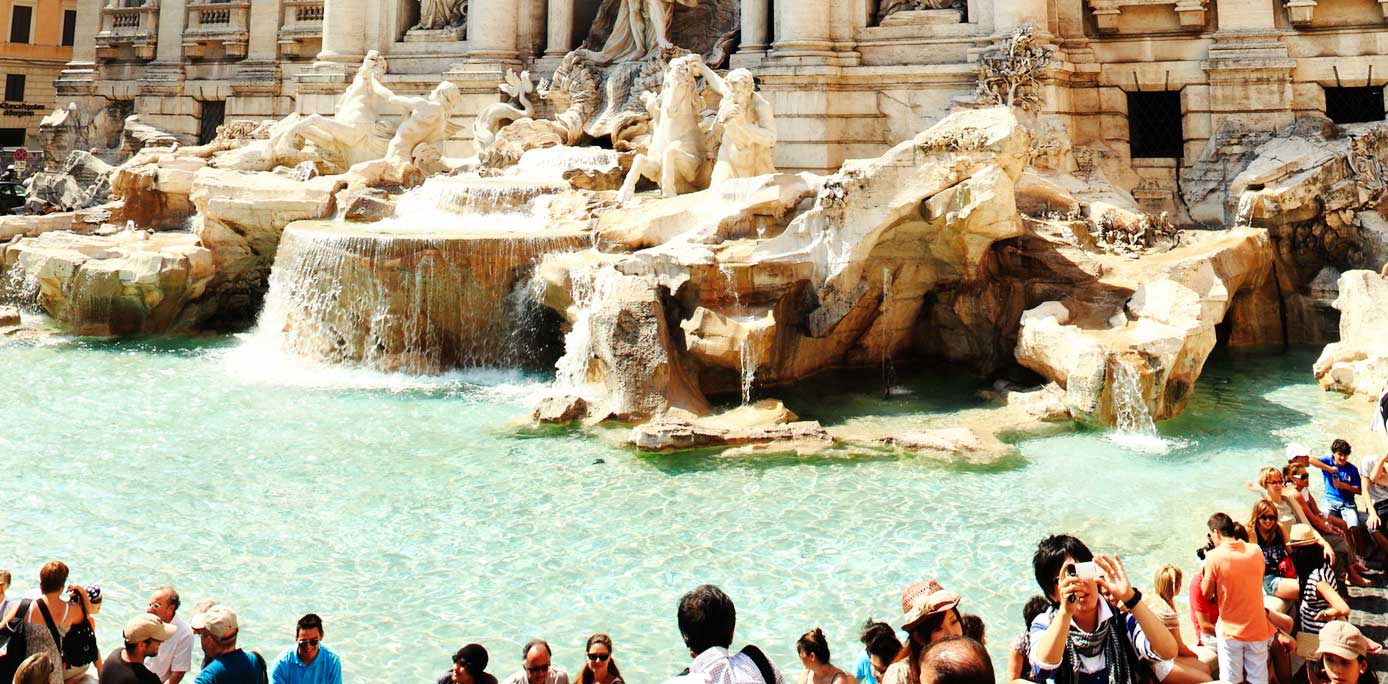Visiting the Fontana di Trevi, turning your back at it and throw a nickel into its waters, with the hope of coming back, one day, to Rome, the most magical place in the world. Of course, all tourists do it: Rome has a way to steal people’s heart as soon as they set foot in her streets and I still have to meet someone who visited and left without longing to come back as soon as possible.
The curious habit of le monetine has come under fire in recent weeks, because of the decision taken by Rome City Council – bitterly criticized already for a perceived inadequacy to care for the city and solve many of its issues – to use the Fontana di Trevi coins for the maintenance of the city’s infrastructures. Sounds like a great idea, you may say, but you see, things are rather more complex than it appears. Traditionally the Fontana di Trevi’s little treasure goes to Caritas, the Catholic Church’s own charity association, which uses it to feed, clothe and care for the poor of the city. Indeed, it is Caritas that, every morning at 8, empties the fountain of its coppery content and, we can deduce, takes a trip to the bank to lodge the little fortune.

The curious habit of le monetine has come under fire in recent weeks, because of the decision taken by Rome City Council
But let’s try to contextualize better the subject. According to data reported by the BBC, about 1.7 million USD are collected from the fountain every year: needless to say, it’s a useful amount, wherever one decides to spend it. Without a doubt, using it to care for destitute citizens is laudable and it has been the best option up to now, but with the city in such a state of disrepair, could Mayor Raggi’s decision, bound to come into effect in April, actually be the most sensible?

Every year the Fontana di Trevi attracts millions of tourists thanks to its beauty and to the curious habit of throwing coins into it © Insos Kampung | Dreamstime.com
The debate has been raging on newspapers and social media. Caritas director, Father Benoni Ambarus declared to Avvenire, the newspaper of CEI, the Italian Bishop Conference, that they “did not foresee this outcome. I still hope it will not be final.” He added also that this decision is bound to hit the city’s most needful the hardest. On the other side of the barricade, Rome City Council which has approved the change, convinced the extra cash will help ameliorate the highly criticized infrastructures of the Città Eterna. As we’d expect in today’s world, Italians took to social media to express their views, most of them being in agreement with Caritas: public opinion seems to be one sided, but it’s unlikely the City Council will change its mind.

The Trevi fountain’s coin always went to Caritas, but starting from April, the money will be used to pay for the capital’s infrastructures up keeping© Danflcreativo | Dreamstime.com
It may be nice, now, to give a bit of context to the tradition of le monetine. In truth, its origins are not clear, even though many historians and folklore experts agree it may have been inspired by the old pozzi dei desideri, or wish wells, which used to be common all over Europe. The pozzi dei desideri had even older roots, as they were probably inspired by holy wells dedicated to pagan divinities, where the faithful would throw little objects and gifts to obtain favors from the gods.
The fountain itself was built between 1732 and 1764 by architect Nicola Salvi and, after him, Giuseppe Pannini; this baroque masterpiece took the place of another fountain already present on the square, fed by the Acqua Vergine, pure water brought to the capital by an ancient Roman aqueduct, the Aqua Virgo. We don’t know really when the custom of throwing coins in it started, but it was certainly made world famous by Frank Sinatra’s song Three Coins in the Fountain, soundtrack to the 1954 movie with the same name and, of course by Fellini’s La Dolce Vita. [/caption]

Whichever its origins, the habit remains popular and is considered a good luck omen.
A tradition part of Roman lore, associated with one of the city’s most famous and iconic monuments, which up to now served a positive aim, that of helping people in need. As frightful as it may be to admit it, poverty is a true issue in today’s Italy: with increasingly high numbers of families unable to reach the end of the month without struggling and an ever growing amount of unemployed people, our beautiful land struggles. Istat data show that 6.9% of Italian families live in absolute poverty and 12.3% in relative poverty, percentages which translate into millions of people all over the country, but concentrated in particular in the Centre and the South. In such a context, supporting every agency and organization working to improve people’s life standards should remain a duty. A no brainer, then: the Fontana di Trevi’s coins should keep on going to Caritas.

The fountain itself was built between 1732 and 1764 by architect Nicola Salvi and, after him, Giuseppe Pannini © Ekaterinabelova | Dreamstime.com
But let’s look at the other side of the coin – pardon the pun: it’s unintended. Rome is a city in severe need of being properly cared for. Its roads need to be repaired, its public transports are severely criticized for being inefficient, full areas of the city turned into a “no man’s land” where criminality thrives. And, of course, there is the immense issue of inadequate refuse collection, with both residents and tourists alike complaining about the unpleasant – and unhygienic – presence of large amount of garbage on street corners, even in the city’s historical centre.
Critics of Raggi’s work are quick to mention her lack of expertise in leading a city like Rome, and they may even be right. But that’s not really the point here. It seems more important to understand how profoundly the social, bureaucratic and logistic problems caused by the capital’s current state of disrepair have been affecting her inhabitants, regardless of their income. Wouldn’t bringing Rome back on her feet, cleaner, safer, with more efficient services, be a benefit also to the poorest? Wouldn’t protecting citizens by reclaiming areas today in the end of small criminality a way to make the whole Roman community safer, and more willing to work with and help one another?
Many may agree, while others may quite rightly say nothing of it has much value on an empty stomach and without a blanket on the bed. The debate continues, but it’s due to end soon: if nothing changes, April will be the first month when le monetine of the Fontana di Trevi will end into the city’s coffers. Will it be, in the end, a good thing for Rome? It all depends on the use Raggi and her administration will make of them.































